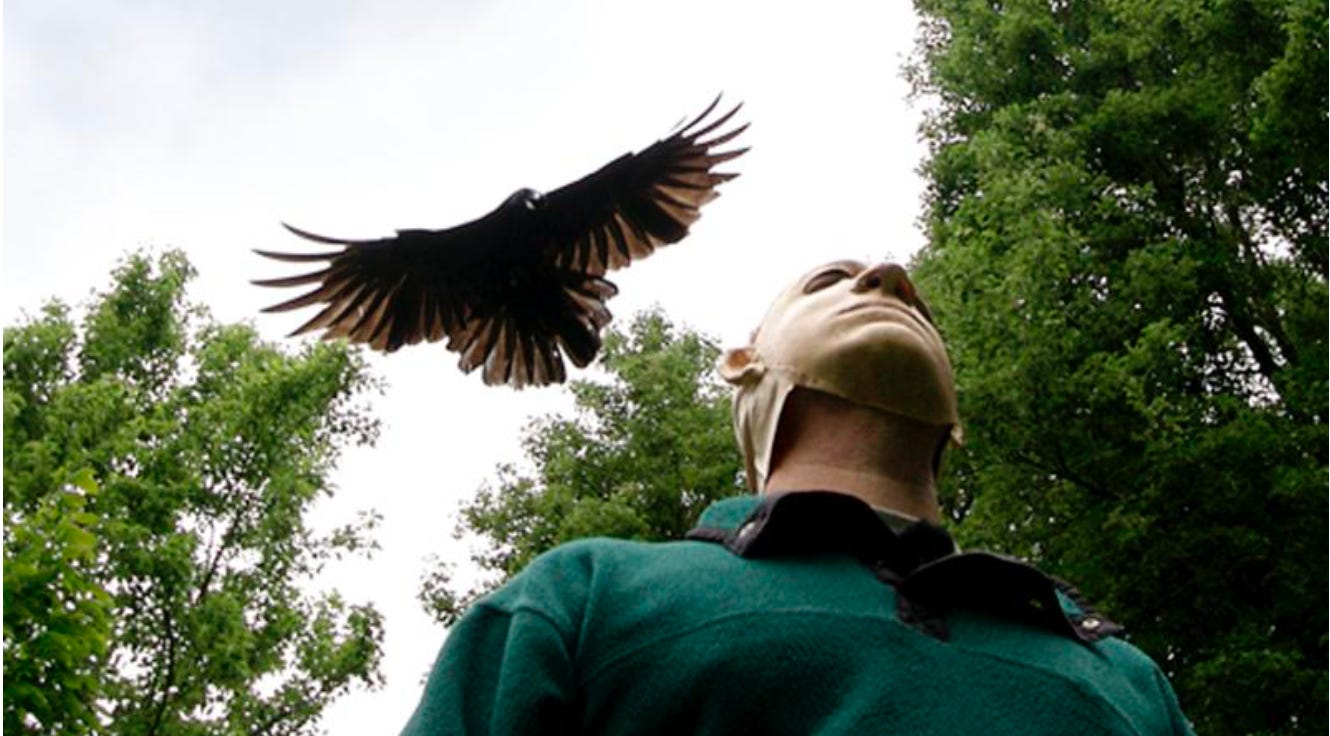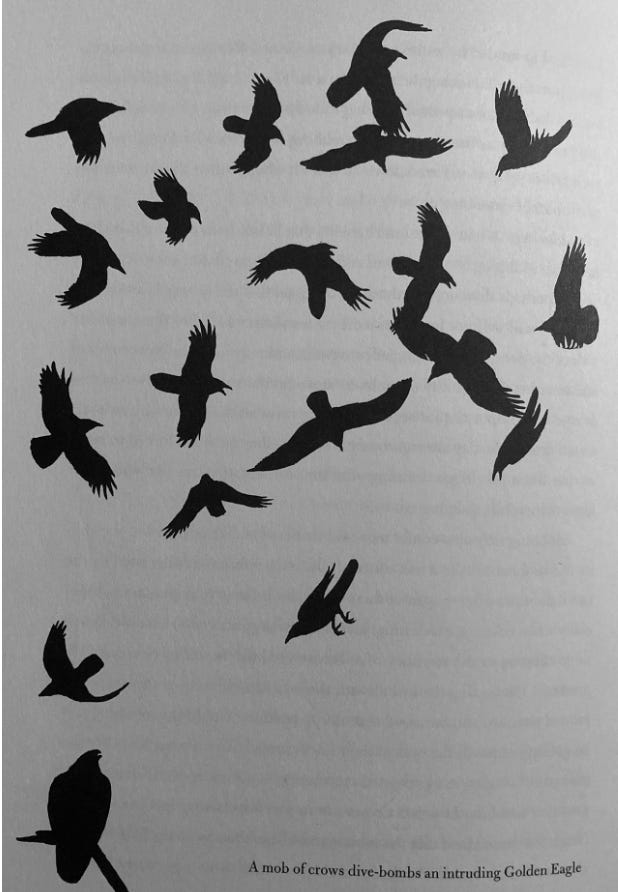Tis the season when crows are out and about protecting their youngsters and their nests. I got to experience this on a run the other day. I was minding my own business heading down an alley when I heard squawking and wing flaps as a crow skirted my head. The bird landed on a fence, scolded me for bothering his or her territory, and then flew up to buzz me. And again, again, and again. Finally, I reached the end of the bird’s territory and continued my run in peace.
As has happened with many people, this was not the first time a crow had decided what my big brother long thought in our youth—that I was in the wrong place and needed to be reminded of the error of my ways. Fortunately, the crow didn’t whack me in the head, as others have experienced. But it was still a bit unnerving to have the bird clearly bothered by my presence and descend in pursuit of my noggin’.
Humans are not the lone species to feel the perturbation of a crow. Last week, driving down I-5 from Arlington, I spotted three red tailed hawks because crows were dive bombing the raptors. This is not unusual but what stood out is that nearly all of my sightings occurred because of the agitated maneuvering of the corvids. Infants in the nest probably made the crows more active and more diligent in harassing the hawks though redtails are far more interested in small mammals than baby birds. Crows also regularly buzz eagles, for good reason; eagles will attack and kill crow nestlings and fledglings.
Crows may also mob people and other predators for another reason. In their fine book, In the Company of Crows and Ravens, John Marzluff and Tony Angell discuss studies where jays and crows seemingly seek out a predator specifically to harass. The authors write that experimental evidence suggests that the corvids are “in fact advertising their self worth!” When given an opportunity to attack a mounted eagle owl surrounded by mounted crows the wild crows not only mobbed the owl but also the ersatz crows. “In fact, they attacked the [mounted] crows more often than the owl when the experiment was conducted in common flocking areas, where advertising one’s self worth is likely to reap the greatest social benefit.” And, you wonder why people tend to anthropomorphize animals…or maybe we are simply emulating them.
Over the past two decades Marzluff has conducted several studies testing crow mobbing behavior. In one study, the focus was whether the crows perceived threatening people, defined as a masked person trapping crows with a net launcher. The birds clearly didn’t forget a face. No matter the age, ethnicity, size, or style of gait of the person wearing the mask of the trapper, the crows recognized the face, became agitated, and mobbed the person. A second study then showed that crows spread the word about the so-called dangerous face of the despised trapper; in the years following the initial trapping, the percentage of crows scolding increased from 30 to 66 percent. The conclusion: young crows learned to scold from their parents. And, you wonder why people tend to anthropomorphize animals.
Despite the seasonal mobbing by crows, I am a huge fan of them. I like how they are so interactive with the world around them. They respond to others. They care for their family members. They gather together for their dead. They teach. They make tools. They make fools…of us. They problem solve. They have fun. They banter. They are enjoyable to watch. (If you want to see crows in all of their splendor, the best spot in the region is the UW Bothell campus, where more than 15,000 roost together in the winter. There are fewer now because most are out on nests breeding and mobbing those who venture too close, including one runner in one alley.)
Word of the Week - Ersatz - A German word meaning replacement or imitation, often in reference to an inferior substitution. The OED’s first reference is from 1875 but the term became more widely used, particularly with negative connotations, after British POWs in WWII encountered ersatz products such as “bread” made with potato starch, flour, and sawdust.







Great article! No doubt you have seen Nova PBS' Do Birds Remember Faces (masks with crows, etc) https://www.pbs.org/video/do-birds-remember-faces-ewrufw/?continuousplayautoplay=true study done at UW - looks like one of the masks you're showing here. Also Nova PBS' Bird Brain. It's fabulous about how birds use tools and much more - here's the link https://www.pbs.org/video/bird-brain-xgnj3x/
Recently, in Costa Rica, I was on a tour with a naturalist guide. He told our group that, at one time, hunters shot a lot of birds. Now, generations later, the descendants of those birds still panic when they hear a car door slam. The guide said that this fear was hereditary - perhaps he meant it was handed down from generation to generation by instruction, though he attributed it to DNA.